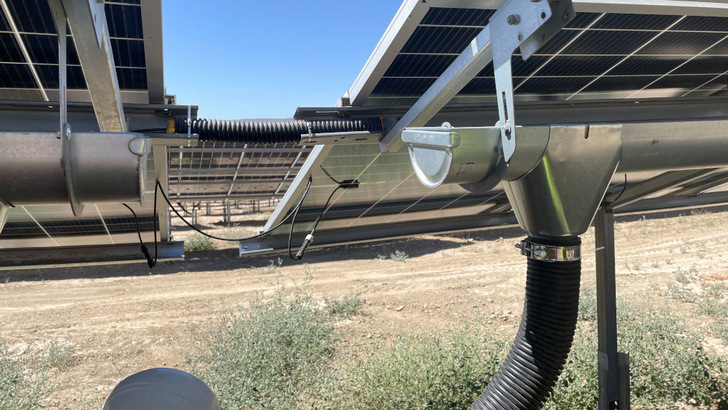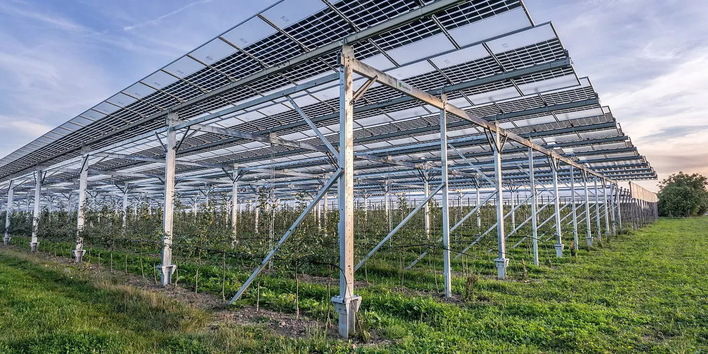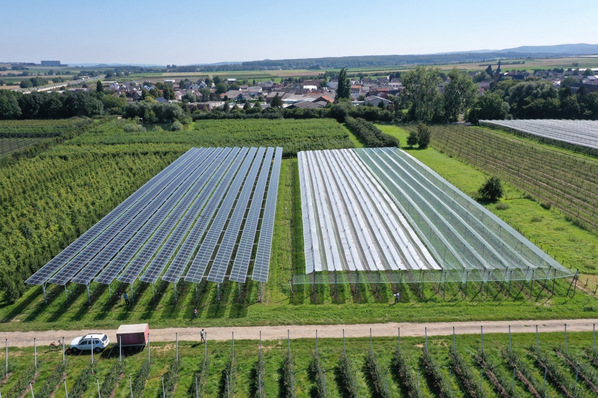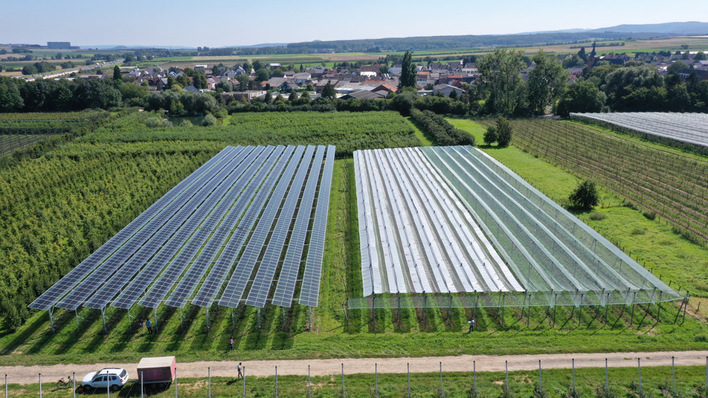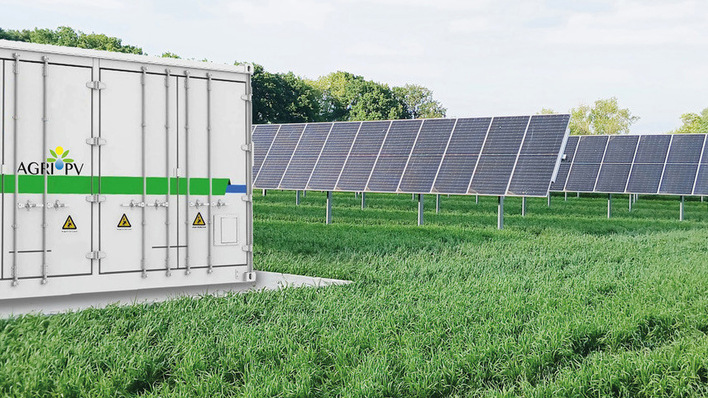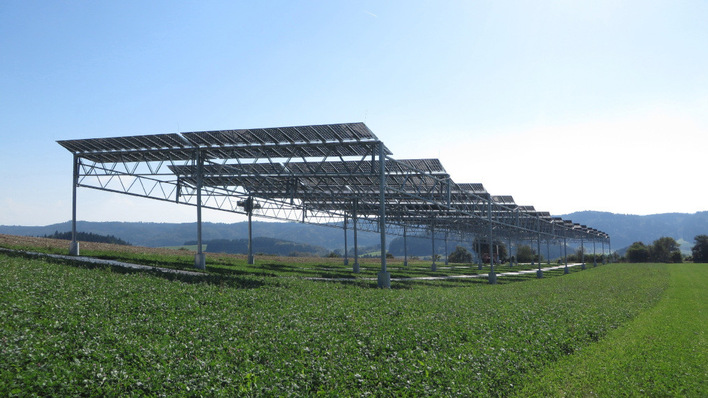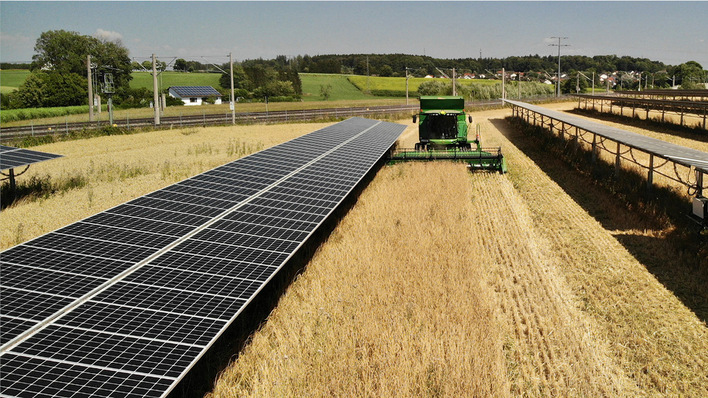The annual drought is no longer only a concern for farmers in Southern Europe. Across Central Europe, growers are also facing insufficient water or rainfall at the wrong time. Although this year brought a relatively typical summer, many farmers in Germany still experienced ruined harvests. Sunshine and dry conditions prevailed in spring and early summer, while heavy rainfall arrived during the harvest season.
More water under the modules?
Agri-PV systems are said to offer protection against such uncertainties, with the promise that solar modules help regulate the soil’s water balance. But do they actually deliver on that claim? Initial findings from a study led by Ulrike Feistel, Professor of Engineering Hydrology at Dresden University of Applied Sciences, and hydrologist Stefan Werisch from the Brandis Lysimeter Station, suggest they can. With support from energy supplier EnBW, the team measured changes in soil moisture beneath several solar parks in Saxony and Brandenburg, including an agri-PV system in Pillnitz near Dresden.
The researchers hypothesised that soil beneath solar modules would experience greater water recharge compared to uncovered ground. In areas of the solar park without panels, the balance between rainfall and evaporation remains similar to that of open land. Under the modules, however, evaporation is reduced – allowing more moisture to remain in the soil.
Stay informed on the solar shift in agriculture – sign up for our free newsletter
On the other hand, rainwater reaches only the ground on the eaves side of the modules, as it flows down the panels and off the lower edge. In a narrow strip behind each row, the same amount of precipitation falls as on uncovered land. However, these areas are shaded from the southern sun, reducing evaporation and helping to retain more moisture in the soil.
Soil moisture determined
That was the theory – but does it hold up in practice? To find out, the team led by Ulrike Feistel and Stefan Werisch measured soil moisture at a depth of ten centimetres beneath solar parks in Boxberg, Pillnitz and Weesow, comparing the results with nearby reference plots. The findings were clear: while moisture levels in the reference areas rose quickly after rainfall, they also dropped off rapidly. Under the solar modules, by contrast, soil moisture remained more stable. In Boxberg, for example, the reference plot showed a daily moisture loss of 0.99 to 1.88 percent, whereas the ground beneath the modules lost only 0.57 to 1.39 percent per day. This effect was particularly pronounced during several consecutive dry days.
More water in dry periods
A similar pattern was observed in Pillnitz beneath the elevated agri-PV system. Although less rainfall reached the soil directly under the modules, moisture levels still declined more slowly during dry spells. In April 2020, soil moisture under the system fell by just 0.35 percent per day, compared to 0.69 percent per day in the reference area.
New study highlights potential of UK agri-PV
In Weesow, measurements were taken in late October and early November 2021. Once again, less water reached the soil directly beneath the modules during rainy days, but evaporation was also significantly lower. Under the solar system, soil moisture decreased by just 0.02 percent per day, compared to 0.27 percent in the reference area.
While the study did not assess how reduced evaporation and shading affect crop yields – particularly near the drip edges of the modules – it clearly shows that both photovoltaic and agri-PV systems significantly influence soil moisture. According to the researchers, lower evaporation combined with increased water retention during dry periods may help stabilise the water balance across the entire site.
Researchers at the University of Science and Technology of China in Hefei, Anhui Province, also examined how agri-PV systems affect water evaporation. They set up water basins beneath two different agri-PV configurations, with a third basin placed in an open reference area. Over an extended period, they measured and compared evaporation rates across all three setups. One of the agri-PV systems featured an open design that allowed significant rainfall to reach the ground, while the other used a standard agri-PV system with semi-transparent modules covering the area.
You can read the results of the research project in China and the full report in our special on photovoltaics for farmers.
Download the special report here. (su)


